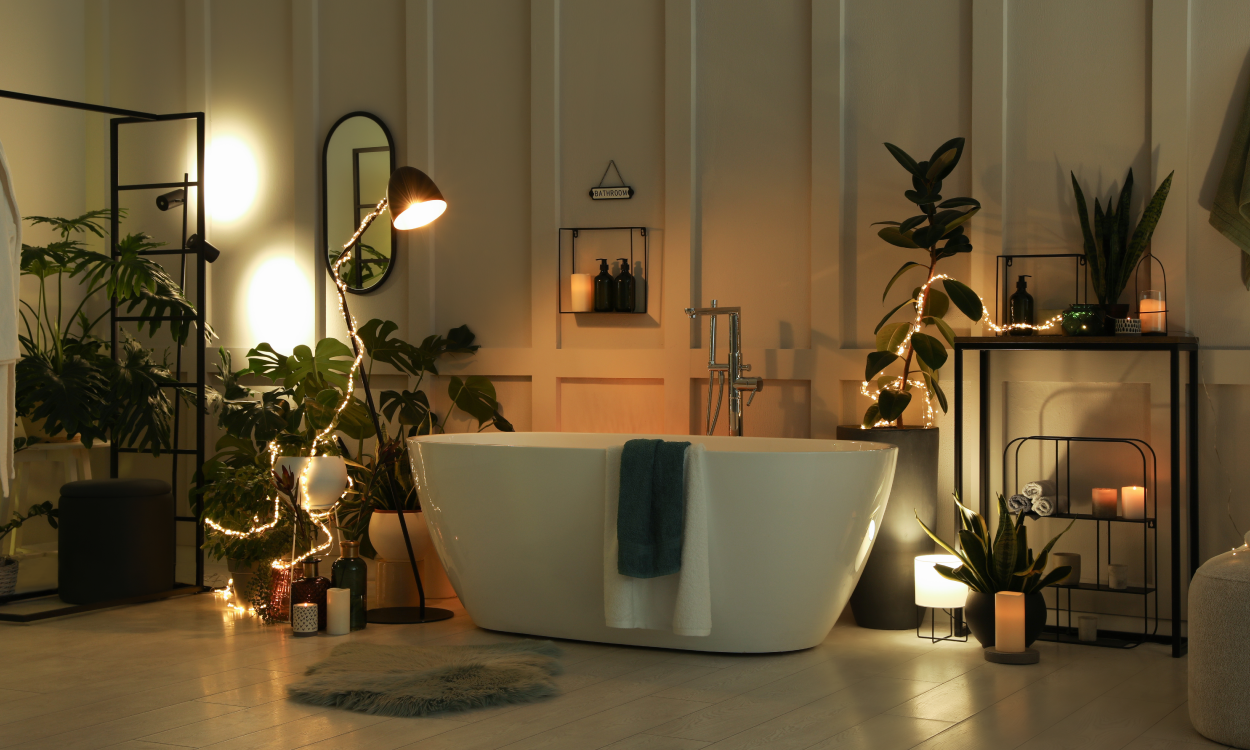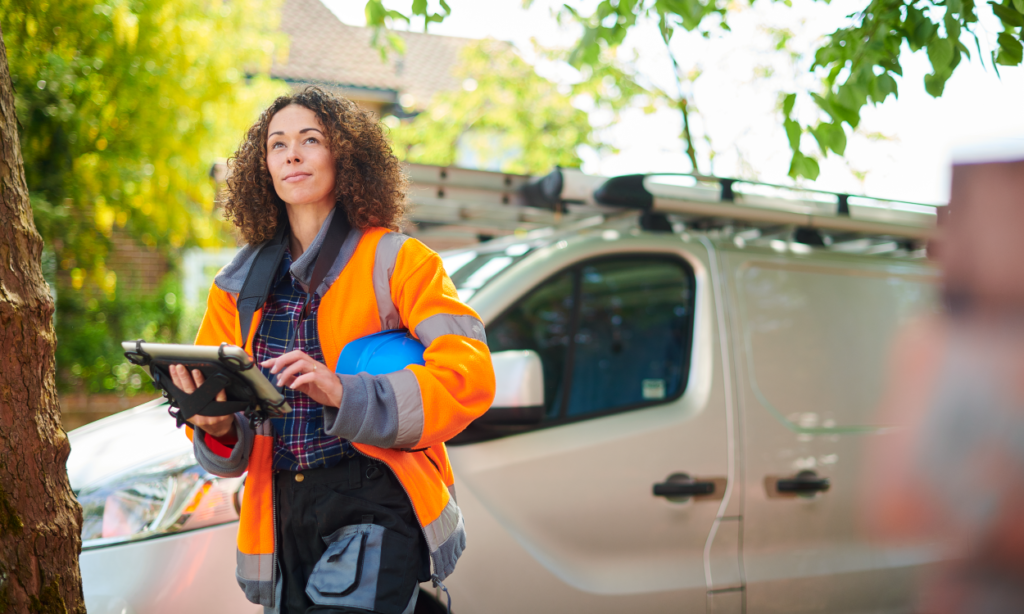Your bathroom is one of the most important rooms in your house.
It is the place where you wash, brush your teeth and get ready to tackle the day ahead.
Lighting plays a crucial role in the overall functionality and aesthetics of any bathroom. Whether you’re building a new bathroom in your home or renovating an existing one, understanding the concept of bathroom lighting zones can help you decide what lighting types are most suitable for your bathroom.
In this article, we’ll explain the different bathroom lighting zones, offering insights into what they are, why they’re important and how to most effectively use them to creat a well-lit, safe and appealing bathroom environment.
Read on for more…

What are IP ratings?
Before we delve deeper into the different bathroom lighting zones, it is important to first understand IP ratings and their importance.
An IP rating, or an ingress protection rating, classifies the degree of protection offered by enclosures of electrical equipment against intrusion from solid objects and water. An IP rating will consist of two numbers.
The first number will provide an indication of protection against solid objects including dust and debris. This ranges from zero to six. Then, the second number represents protection from moisture and ranges from zero to eight.
Each digit represents a different level of protection.
For example, the first digit ratings are as follows:
- 0 – no protection
- 1 – protected against penetration from solid objects of 50mm or above
- 2 – protected against penetration from solid objects of 12mm or above
- 3 – protected against penetration from solid objects of 2.5mm or above
- 4 – protected against penetration from solid objects of 1mm or above
- 5 – protected against dust
- 6 – fully dust tight
The second digit ratings are:
- 0 – no protection
- 1 – protected from vertically falling drops
- 2 – protected from water drops falling at a maximum angle of 15°
- 3 – protected from water drops falling at a maximum angle of 30°
- 4 – protected from splashing and projection of moisture
- 5 – protected from low-pressure jets
- 6 – protected from high-pressure jets
- 7 – protected from temporary immersion
- 8 – protected from large periods of immersion
Both numbers are then put together to create an overall IP rating. For instance, an IP44 rating would illustrate that the lighting is able to protect from solid objects larger than 1mm (the first digit four) and water that is splashed from any direction (the second digit four) the higher the numbers, the greater the resistance to both solids and liquids.
With this in mind, when it comes to making a purchase you should always consider higher IP ratings.
What are bathroom lighting zones?
Bathroom lighting zones refer to the different areas within a bathroom where lighting is present. A bathroom is broken down into several different zones to help clearly define what type of lighting is most suitable.
These zones are as follows:
Zone 0 – inside the bath or shower
Zone 0 refers to areas that are inside the bath or shower tray. This will be the wettest area of the bathroom since it’s directly exposed to water on a regular basis. Therefore, any lighting installed in this zone must have the highest level of waterproofing protection.
The IP rating needs to be IP67 at a minimum, meaning it is suitable for immersion in water. Plus, any fitting in this zone needs to be of a low voltage. Low voltage lighting of 12v is mandatory for safety reasons.
Typically, submerged lighting or waterproof LED strips can be used, as these offer a relaxing ambience without compromising safety.
Zone 0 lights are normally used for decorative purposes, creating spa-like environments with gentle underwater lighting. If you’re installing lighting in a jacuzzi or large bathtub, this is the zone you’d focus on.
Zone 1 – Above the bath or shower
Zone 1 includes the area directly above baths or showers. Normally, this is up to 2.25 metres from the floor. This zone also requires careful consideration due to the fact it is highly likely to be splashed with water.
The IP rating needs to be a minimum of IP44 to protect against water splashes. And, similar to zone 0, low voltage lighting (12v) is required in these areas for added safety. Recessed ceiling downlights, LED spotlights or shower lights can be used in this zone. The lights also need to be bright enough to provide clear visibility but should also be highly rated for moisture exposure.
This is one of the most functional parts of your bathroom, and it’s essential to use durable and waterproof lighting here to make sure the area remains well-lit while minimising the risk of electrical hazards.
Zone 2 – Adjacent to the bath or shower
Zone 2 is an area that extends about 60cm outside the perimeter of the bathtub or shower and around 2.25 metres above the floor. It covers areas that are not directly exposed to water but it may still be affected by humidity and steam.
In zone 2, these areas must have an IP rating of IP44 as a minimum. Wall-mounted lights, such as vanity or mirror lights, work well in this zone. Waterproof pendant lights or recessed ceiling lights are also excellent choices for enhancing both functionality and style.
Zone 2 lighting is particularly important in areas near sinks and basins. Proper lighting here can also improve clarity for daily grooming tasks like shaving or applying makeup.
Zone 3 – general bathroom lighting
Also known as the bathroom’s outside zone, zone 3 covers any area beyond zone 2. This includes walls and ceilings that are farther away from any direct water sources, so these areas are generally less exposed to water or moisture.
There is no specific IP rating requirement for lights that are installed in this zone, though IP20 fixtures are recommended for protection against dust. Almost any type of lighting is suitable for this area, from ceiling-mounted lights to wall sconces and all decorative lighting options. You can be more creative with the style and types of lighting in zone 3, as safety regulations are considered to be less restrictive.
Types of bathroom lighting
There are a whole host of lighting types, all of which serve various functions. A well-lit bathroom will usually require a combination of different lighting layers.
Some of these lighting types include:
Ambient lighting
This lighting type provides general illumination to the area and is often the primary source of light in a bathroom. It ensures that the space is adequately lit by reducing shadows and enhancing visibility.
Usually, these fixtures are placed on ceilings and can be recessed lights and LED panels. It is ideal for lighting up large spaces or providing general light across a whole bathroom. Ambient lighting is best suited for zones 2 or 3 where there is less of a risk of direct water exposure.
Task lighting
Task lighting focuses on areas where precision is considered to be most important. This may be areas around mirrors or vanity units. This type of lighting is so named as it is essential for grooming activities like shaving, applying makeup or brushing your teeth.
Task lighting needs to be bright and clear but not harsh. Warm, natural tones that mimic daylight are ideal for these areas as they allow people to groom without being exposed to intense lighting. It is primarily used in zones 2 and 3. Though it can be installed near sinks or showers with the appropriate IP ratings.
Accent lighting
Used to create mood and highlight specific features within a bathroom, accent lighting is often used to draw attention to architectural elements or to enhance the aesthetic appeal of a room. They can be installed as LED strips under cabinets, and as wall-mounted sconces or small spotlights.
They are best used to create a tone of luxury in a bathroom, generating a spa-like relaxing environment. It can also be used to add depth and interest to the overall lighting design. Mostly, accent lighting is found in zone 3 where the emphasis is on decor rather than safety concerns.
Decorative lighting
Adding style and personality to every bathroom, decorative lighting is about so much more than just illumination. In fact, decorative lighting is about creating a focal point that adds an element of luxury. They are used to make a design statement, often in larger or more high-end bathrooms – especially where there is minimal water exposure. Zone 3 is the best choice for decorative lighting since it’s furthest away from water.
What colour lighting should I choose?
When selecting lights for your bathroom, colour temperature is another important consideration. The colour of a light source can dramatically change the look and feel of a space.
These include:
Cool white: Ideal for task lighting, such as mirrors and vanities, cool white light creates a bright, crisp atmosphere. They’re perfect for precision tasks but may also feel a bit clinical in places.
Warm white: Better for accent or ambient lighting, warm white lights give off a soft and relaxing glow. This colour temperature is perfect if you’re looking to create a calm and cosy bathroom atmosphere.
Daylight: This simulates natural daylight and is excellent for task lighting around mirrors. However, it may be too intense for ambient lighting in smaller bathrooms.



